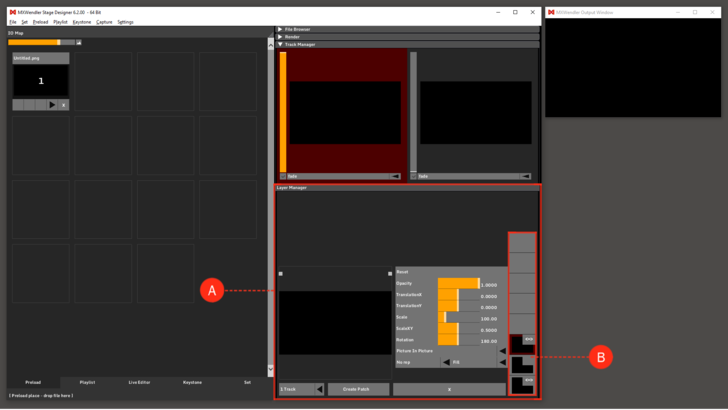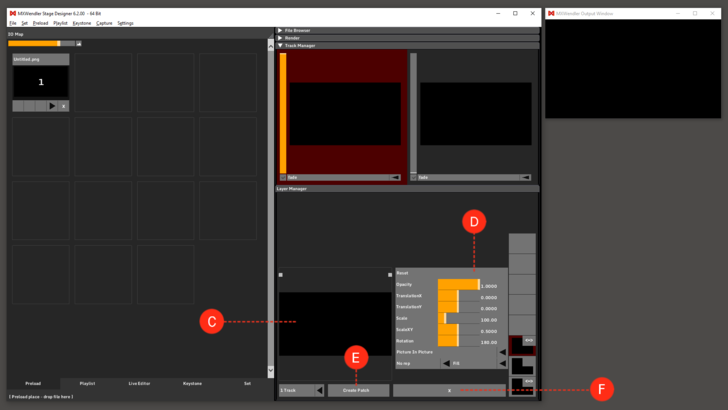Layer Manager: Difference between revisions
No edit summary |
(No difference)
|
Revision as of 13:47, 14 January 2020
The Layermanager enables the layer-based processing of video media, a procedure well known in image processing. Individual image components are composed together in a stack, from bottom to top.
The layer manager is the origin of the output pipeline, where the compositing for the track happens.
By default it contains a number of 8 Layers (per Track). (A)
The settings can be changed in the Settings menu under:
- Settings → Windows → Misc.
A Maximum of 16 Layers can be used in each Track.
Layers: Media in playback, is shown here. (B)
- The layers work on a bottom to top structure, the higher layer is on top in the output.
- The layers can be linked with each other through the chain symbol on the top-right corner of each layer.
- Each modification applied to a linked layer will be applied also to the other linked layers.
- By editing a linked layer while holding the 'Modifier Key' (Windows: CTRL), only the selected layer is modified.
{{#mpdftags: pagebreak}} Layer Preview: Shows a preview of the selected layer. (C)
- A clip from Preload, File Browser or Live Editor can be dragged&dropped here and it will be played in the first free layer from bottom.
- The position of layer in output, can be edited here by drag&drop and can be scaled by using the two pivots on top of the preview.
Transforms: Editable values to transform the size and shape of the output layer. (D)
Create Patch: Creates a Patch, namely saves the composition in 'Set' to be recalled in a later moment.
- A Patch can be made from the selected track or, simultaneously from more tracks. See also Set. (E)
Delete: The 'Delete Layer' button is marked with an 'X'. By clicking it, the selected layer will be deleted.(F)
- Clicking 'X' while holding the Modifier Key (Windows: CTRL), deletes all the layers of the track at once.
- Tipp: deleting a layer saves the edits in the original preload of the layer.

